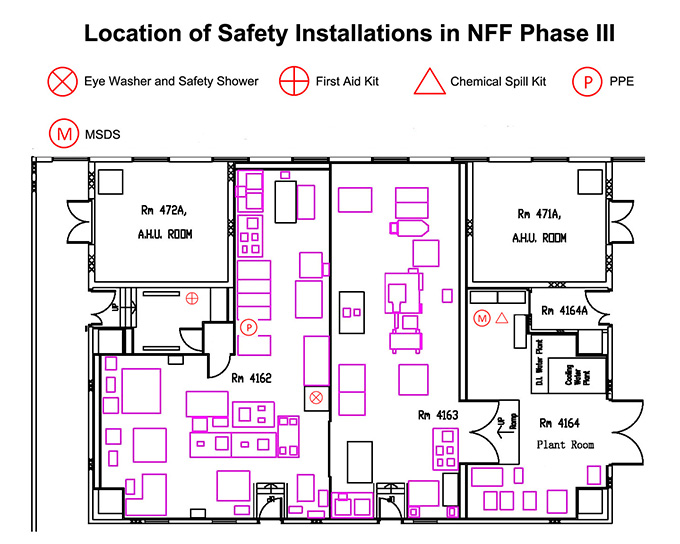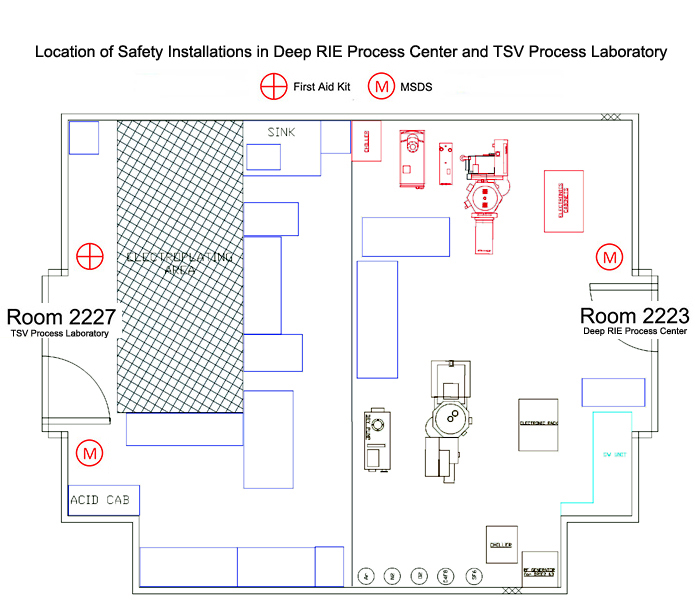Safety Installation

An array of safety installations are in place in our laboratory. In our training course, users learn about where these safety installations are and how to operate them. Some of the safety installations in our laboratory are listed below:
- Eye washer and Safety Shower
- First Aid Kit (contains calcium gluconate for treating exposure to hydrofluoric acid)
- Chemical Spill Kit
- Emergency Telephone Directory
- Evacuation Route
- Emergency Lighting
- Personal Protective Equipment
- Right-To-Know Center (MSDS)
- Emergency Safety Equipment
- Fire Blankets
- Emergency Alarm Button
- Dangerous Gas (DG) Leakage Alarm System
PPE is personal protective equipment designed to protect the wellbeing of lab users and staff. Appropriate PPE is located next to any equipment that has the potential to pose hazards, such as a wet station. PPE includes:
- Face shields, which are designed to protect face and neck
- Safety glasses, which are used to protect eyes
- Air-purifying respirators, which are used in adequately ventilated areas containing at least 19.5% oxygen to protect one from hazardous fumes and particles
- Self-contained breathing apparatus (SCBA), which is used when the air in the room might be dangerous to health, and when fighting fires. Only NFF (CWB) staff is trained to use this apparatus.
The Dangerous Gas Leakage Alarm System is set up in NFF (CWB) Phase II to warn of any toxic gas leakage from the equipment or from the dangerous gas storeroom. The electronic gases that are used in our laboratory include:
- Silane (SiH4)
- Germane (GeH4)
- Dichlorosilane (SiCl2H2)
- Chlorine (Cl2)
- Boron Trichloride (BCl3)
- Ammonia (NH3)
- 50% Phosphine in Silane ( 50 % PH3 in SiH4)
- Arsine (AsH3)
- Phosphine (PH3)
- Boron Trifluoride (BF3)

Some of these gases are toxic, corrosive, and pyrophoric. Hence they are stored in cylinders and placed inside negative pressure cabinets. The Dangerous Gas Leakage Alarm System monitors the cylinders for signs of abnormality. If the gas concentration in a cylinder rises above the 8-hour threshold limit value, the system will give an audio and visual alarm and at the same time will shut off that cylinder. Any equipment that has electronic gases inside is similarly monitored by the system.
There are six repeater alarm panels installed in different areas of the laboratory. If one of the panels triggers an alarm, users must follow the evacuation procedure to leave the laboratory immediately.


